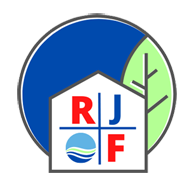Mold spores are much smaller than pollen grains, allowing many of them to bypass the normal filtering function of the nose effectively. Inhalation of mold spores into the lung is a common cause of asthma attacks in people who are allergic to molds. In some patients with chronic sinusitis an allergic reaction to mold overgrowth in the nasal sinuses can cause a condition termed allergic fungal sinusitis.
Mold spores come from soil and decaying vegetation, and are ubiquitous. Mold counts increase near irrigated farm land, golf courses, artificial lakes and high water use vegetation.
In the semi-arid southwest, atmospheric mold spore counts are generally lower than in regions that have a higher rainfall.
Mold growth and spore counts increase with increased rainfall and high humidity, after the summer rains and in the fall. Dry and cold conditions tend to inhibit mold growth.
In houses with evaporative cooling and old carpets, mold can be a problem. Growth of mold in houses increases after a plumbing leak or roof leak onto carpet.
Many types of mold are found in soil and house dust. The most common types in the southwest include Alternaria, Cladosporium, and Helminthosporium.
The supposed connection between chronic symptoms and “toxic mold” is highly controversial and has not been scientifically established. Symptoms claimed to be from “toxic mold” are different from the usual symptoms of mold allergy.

